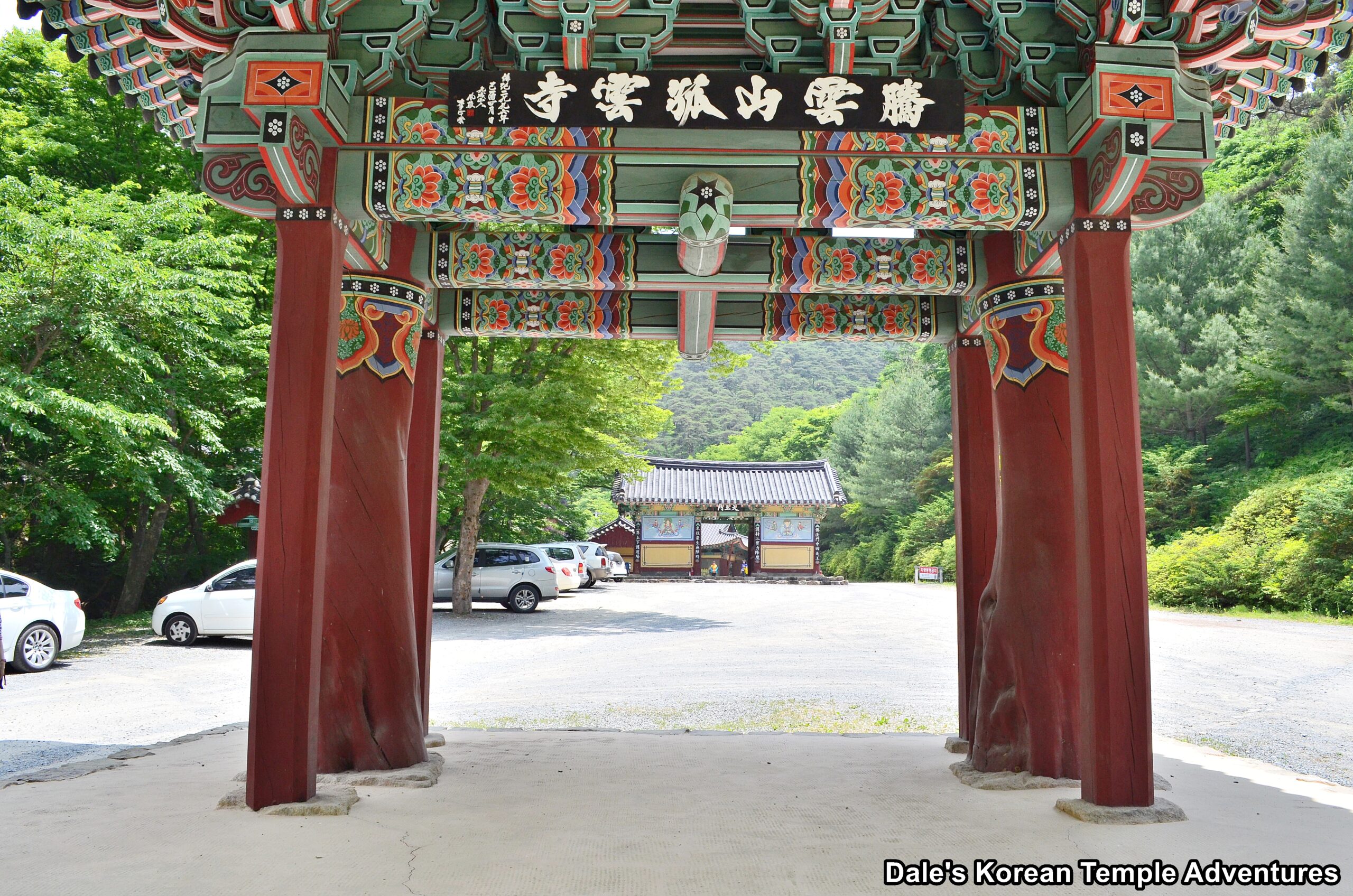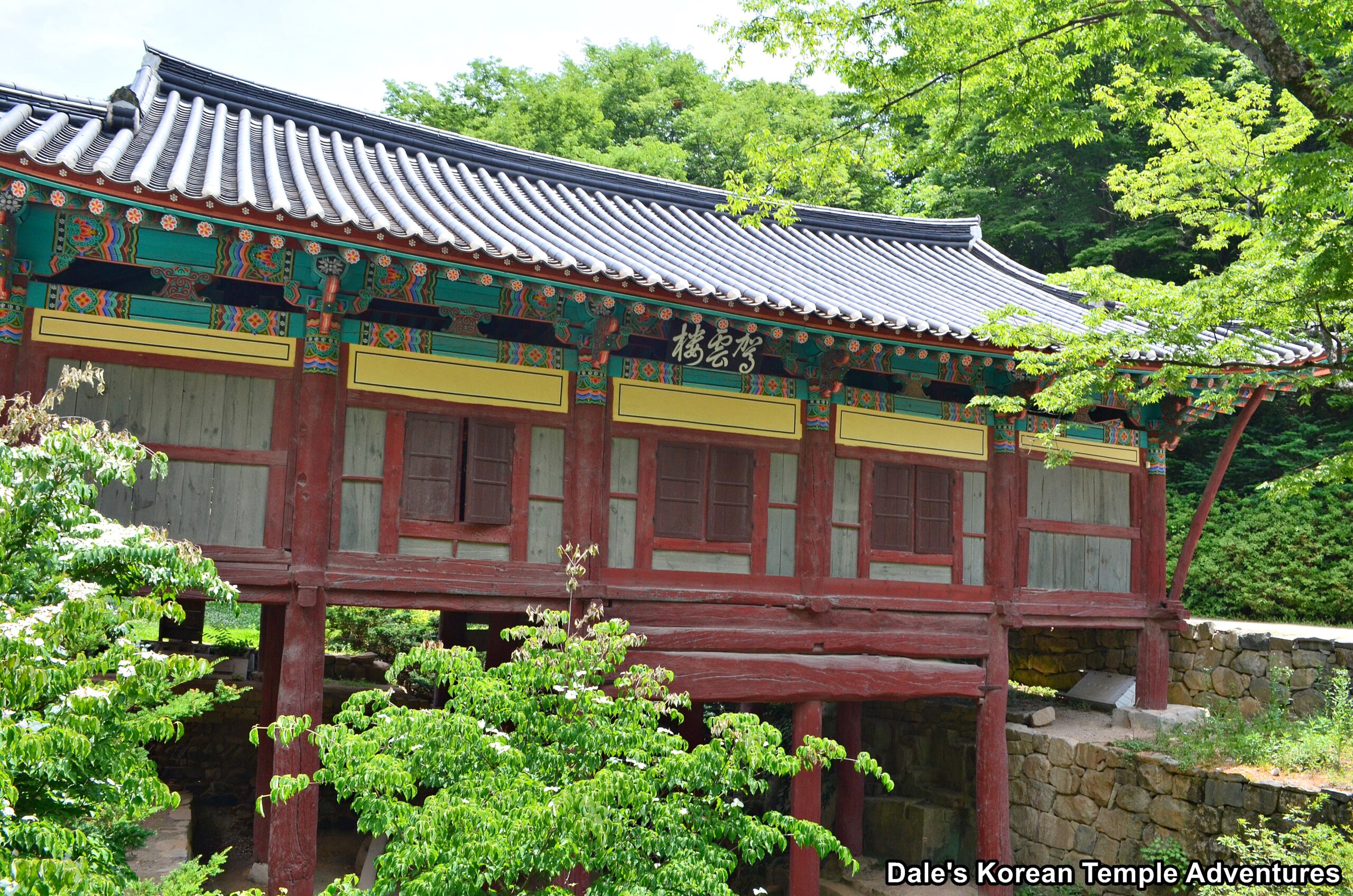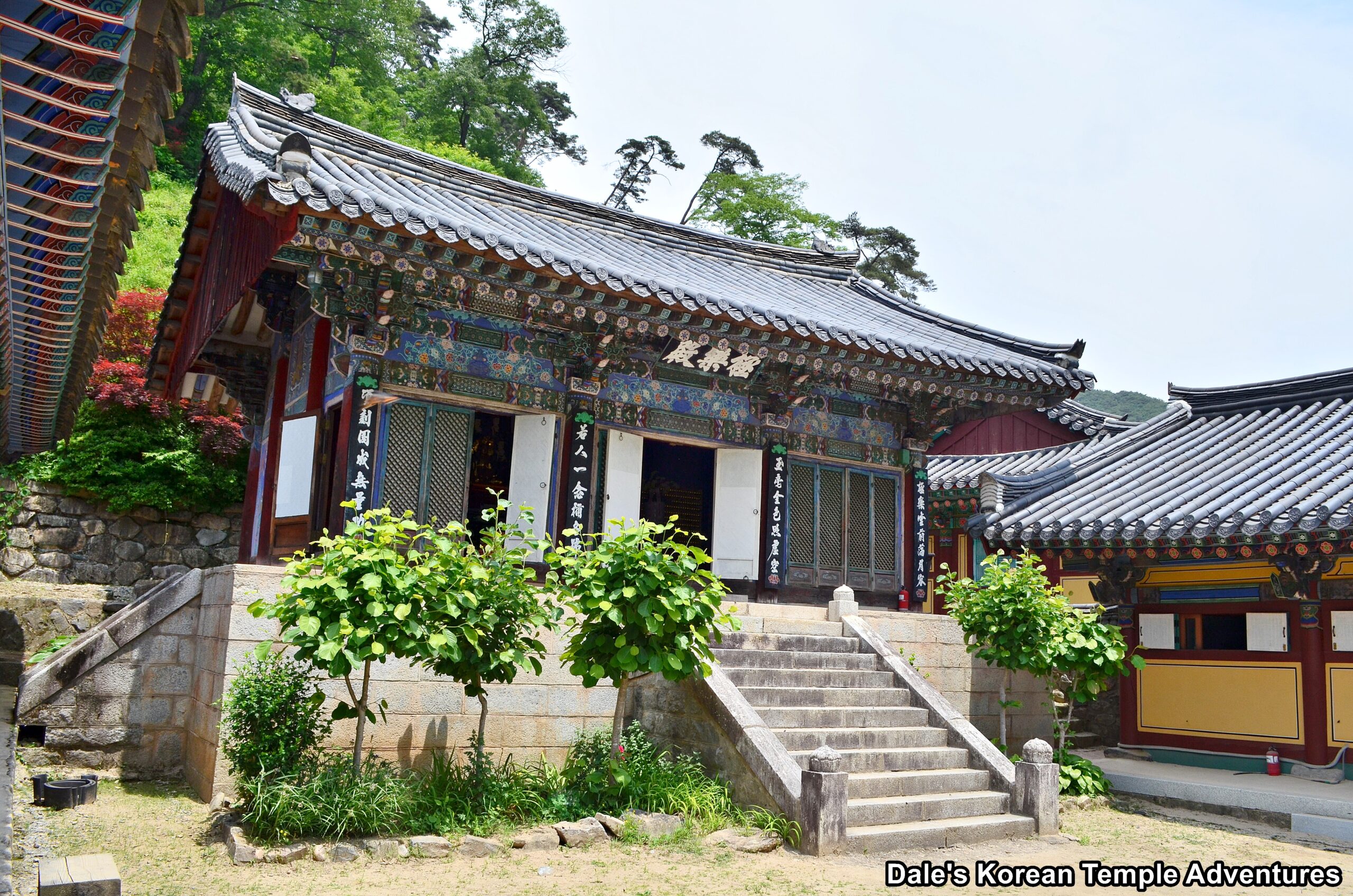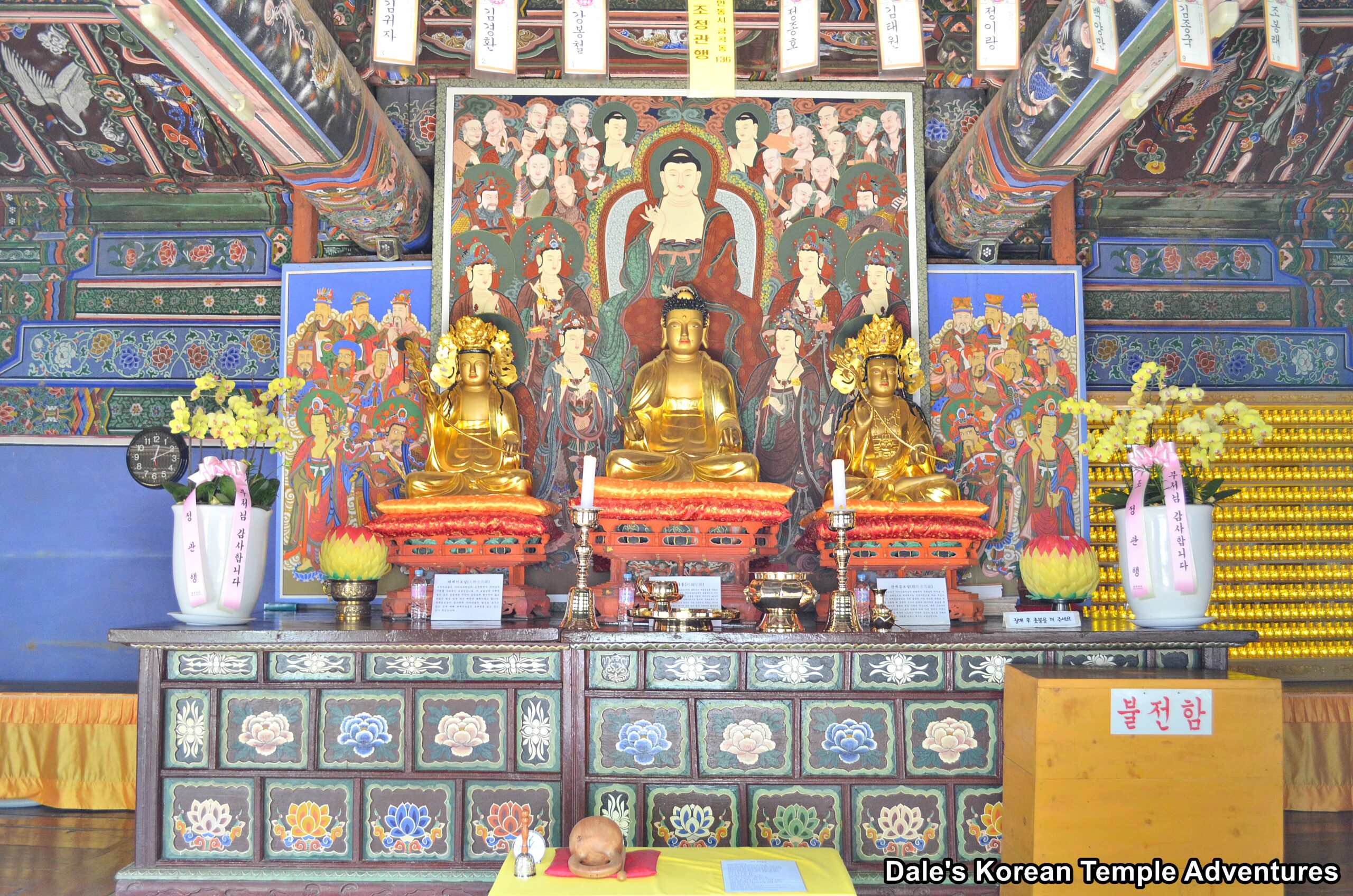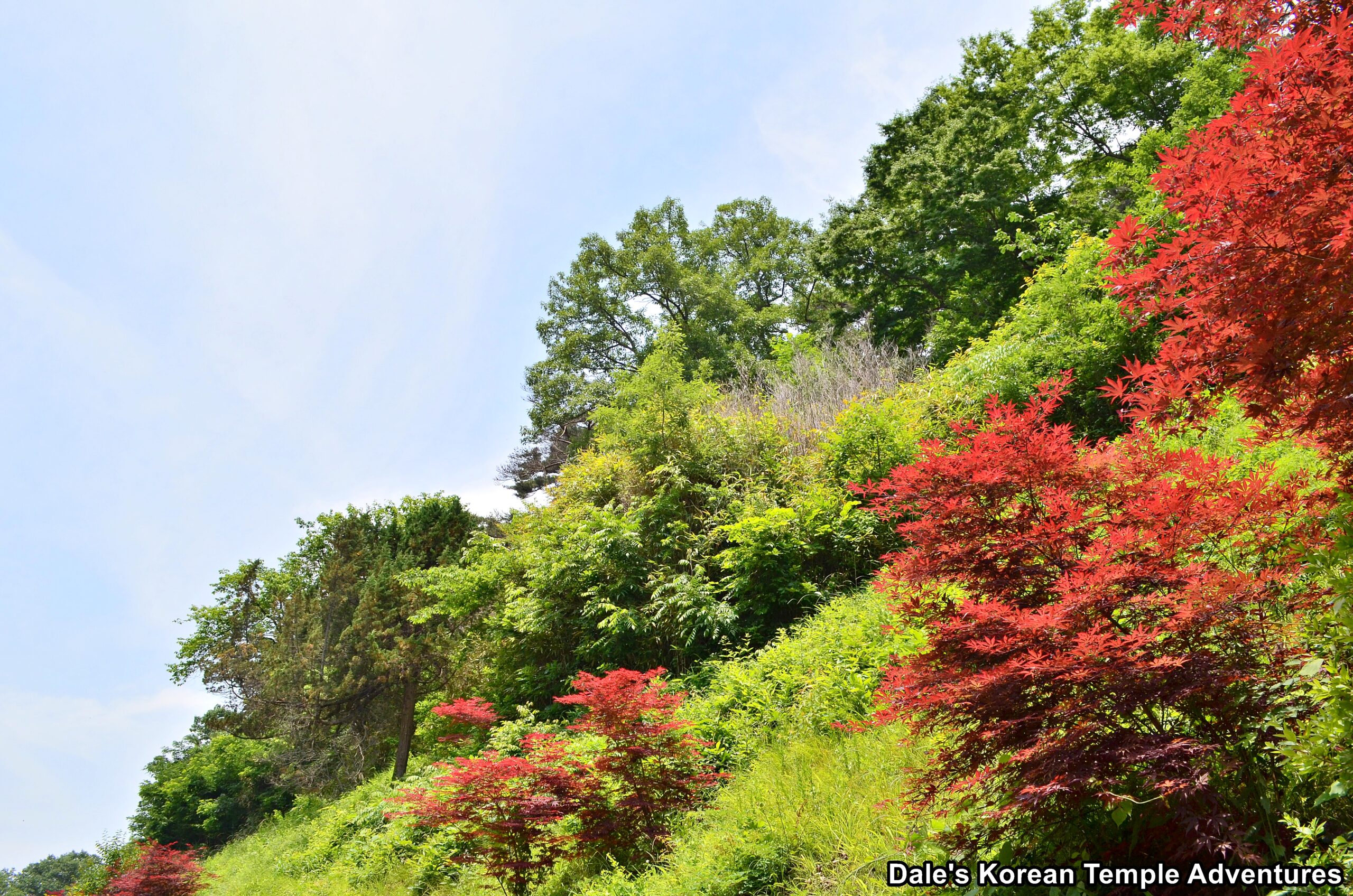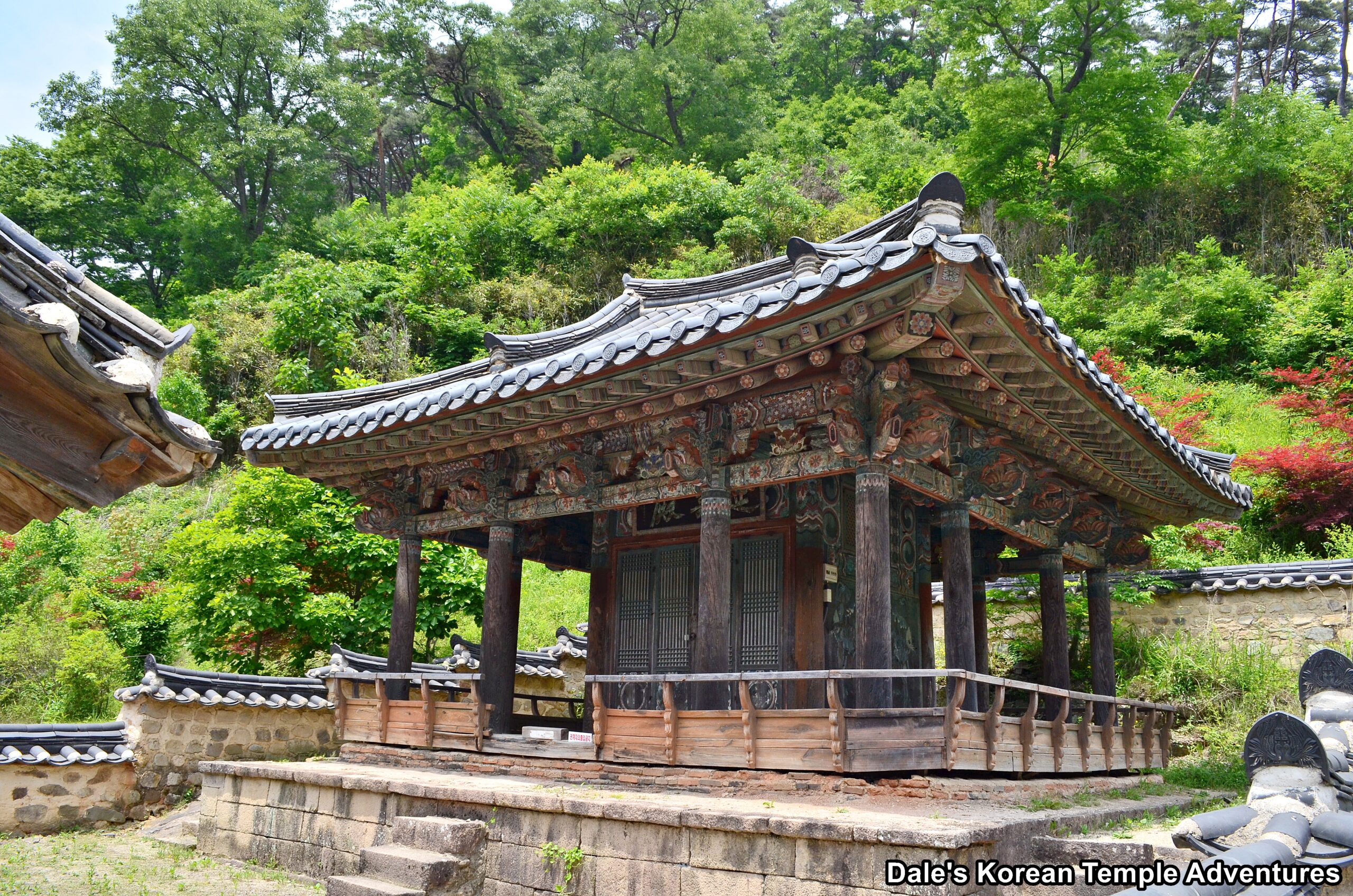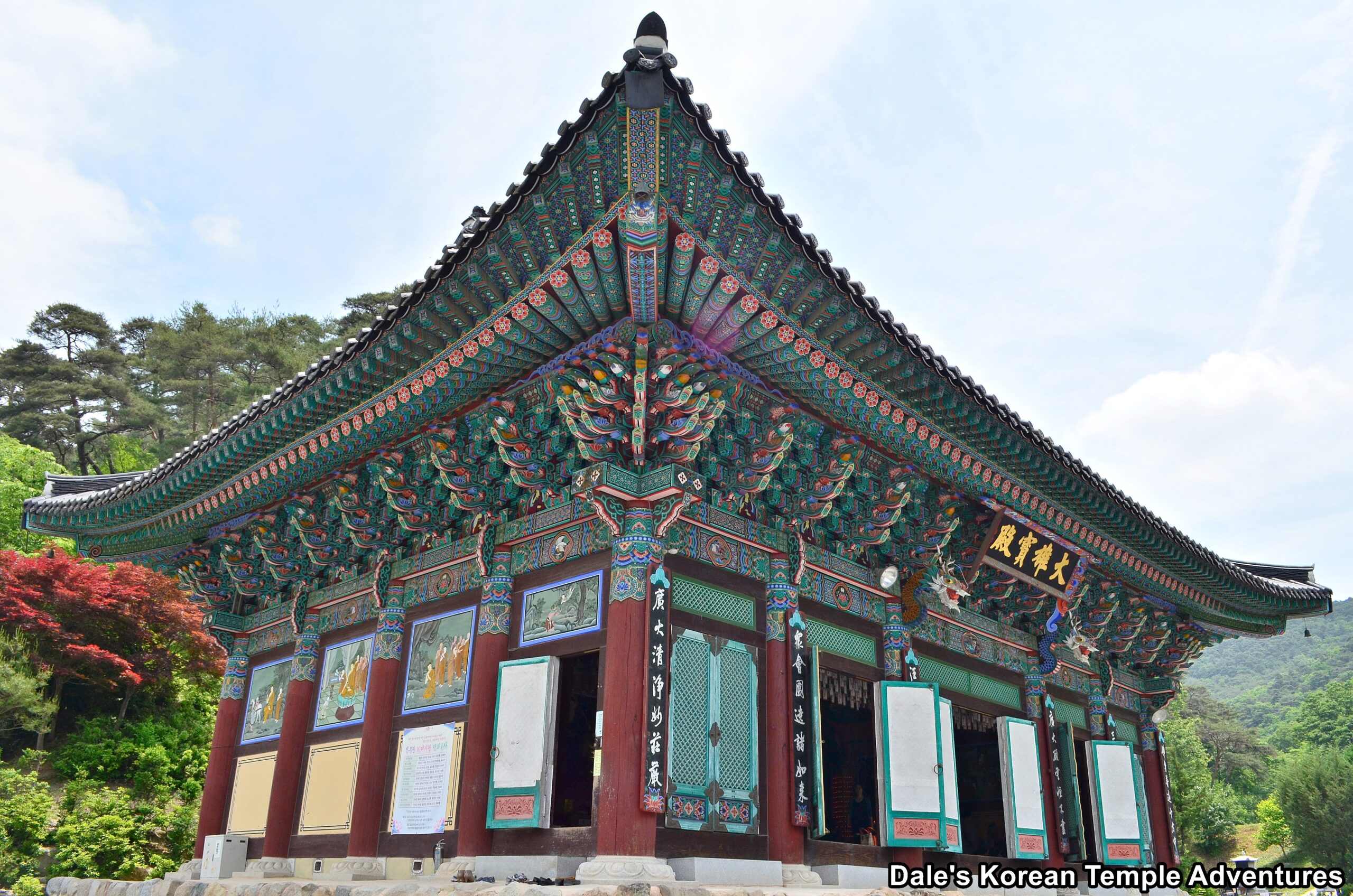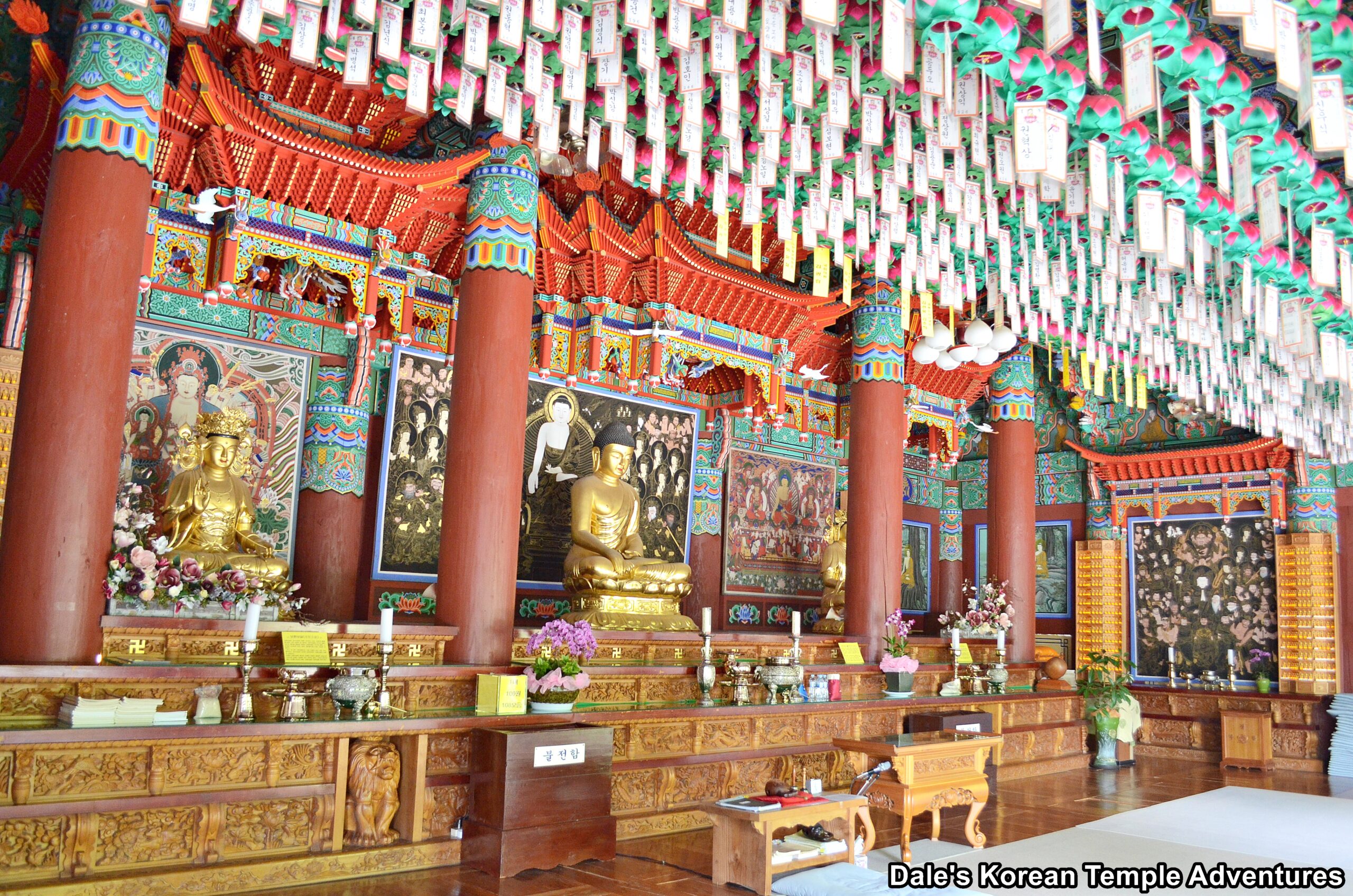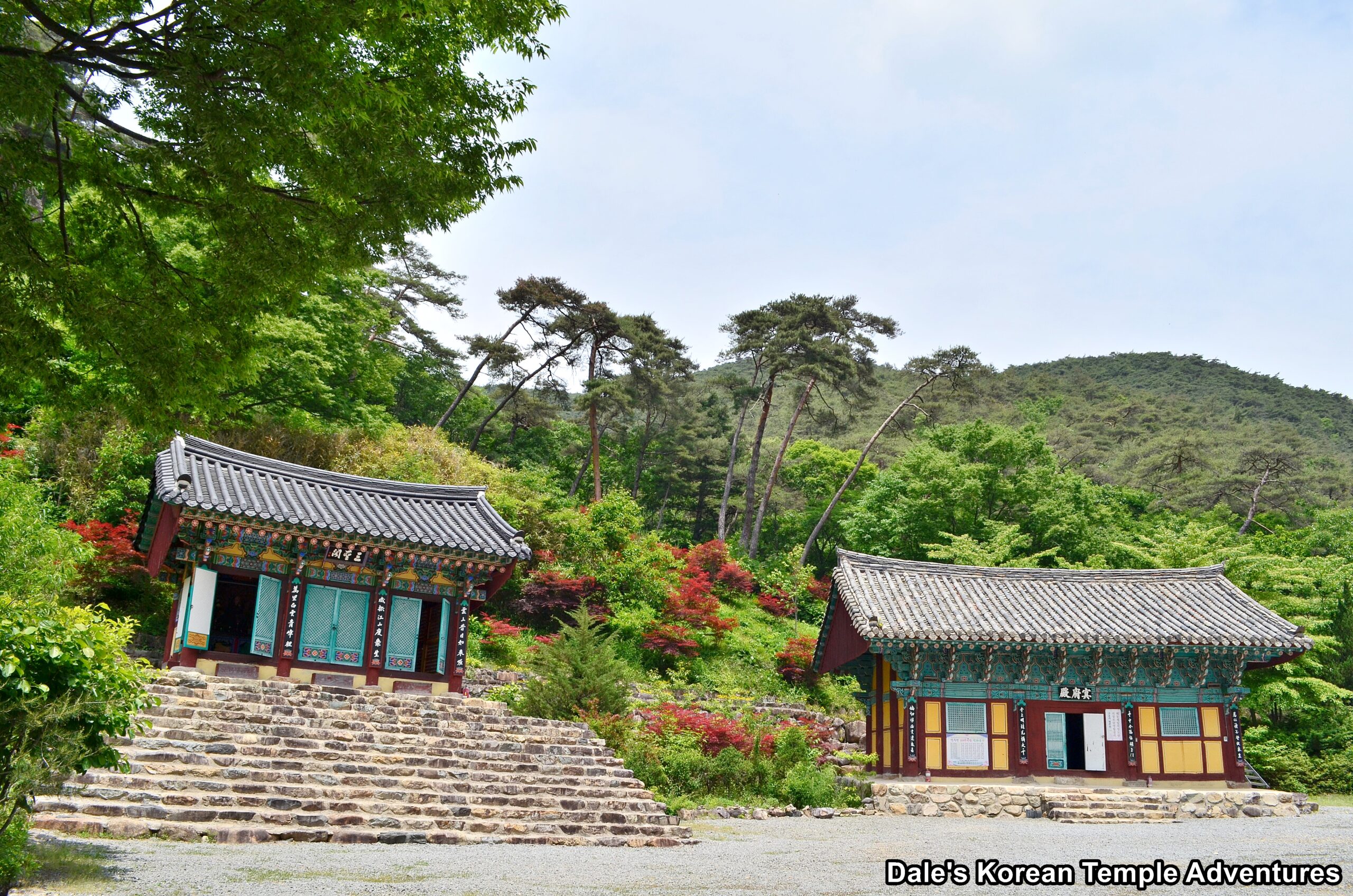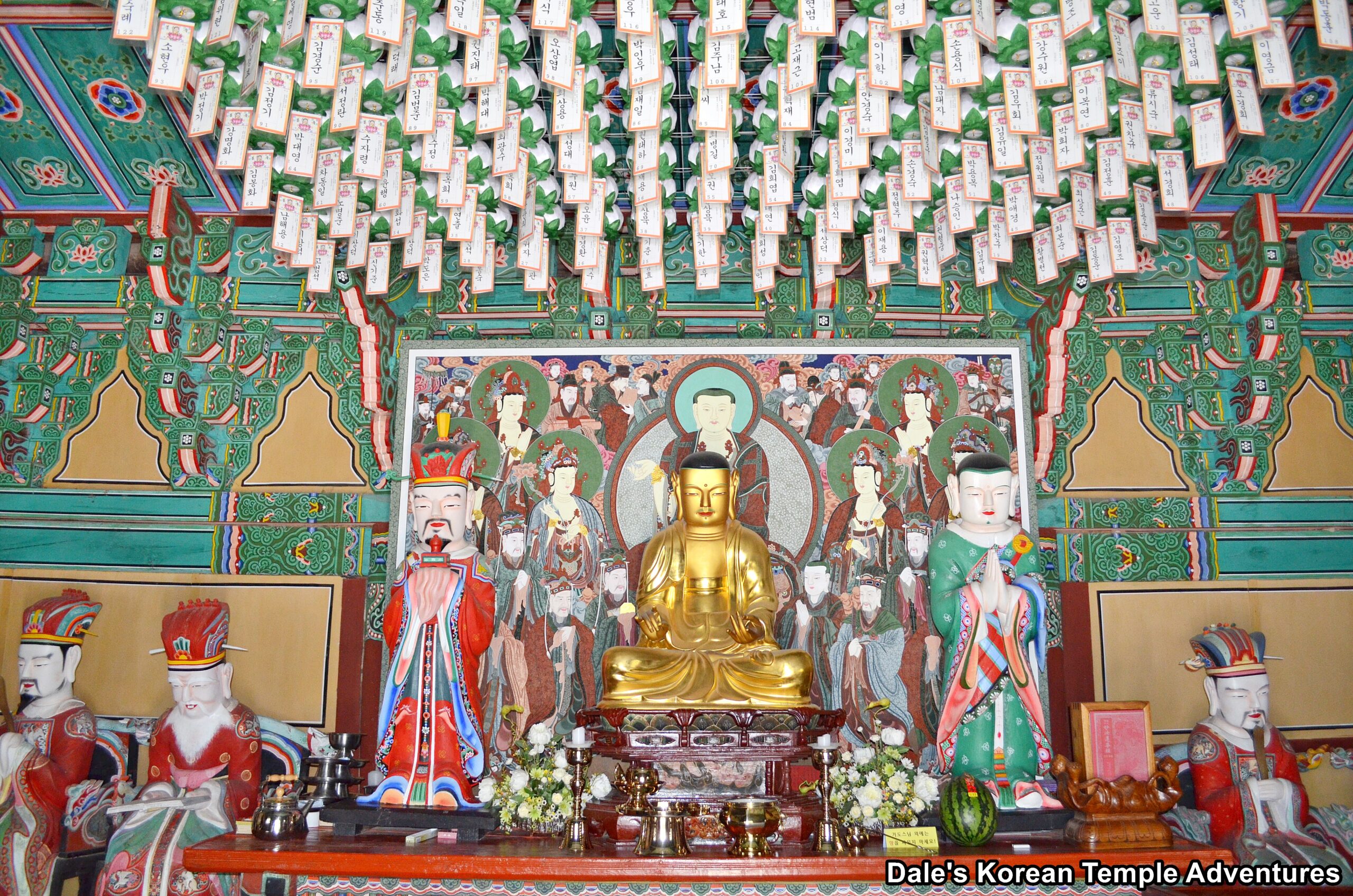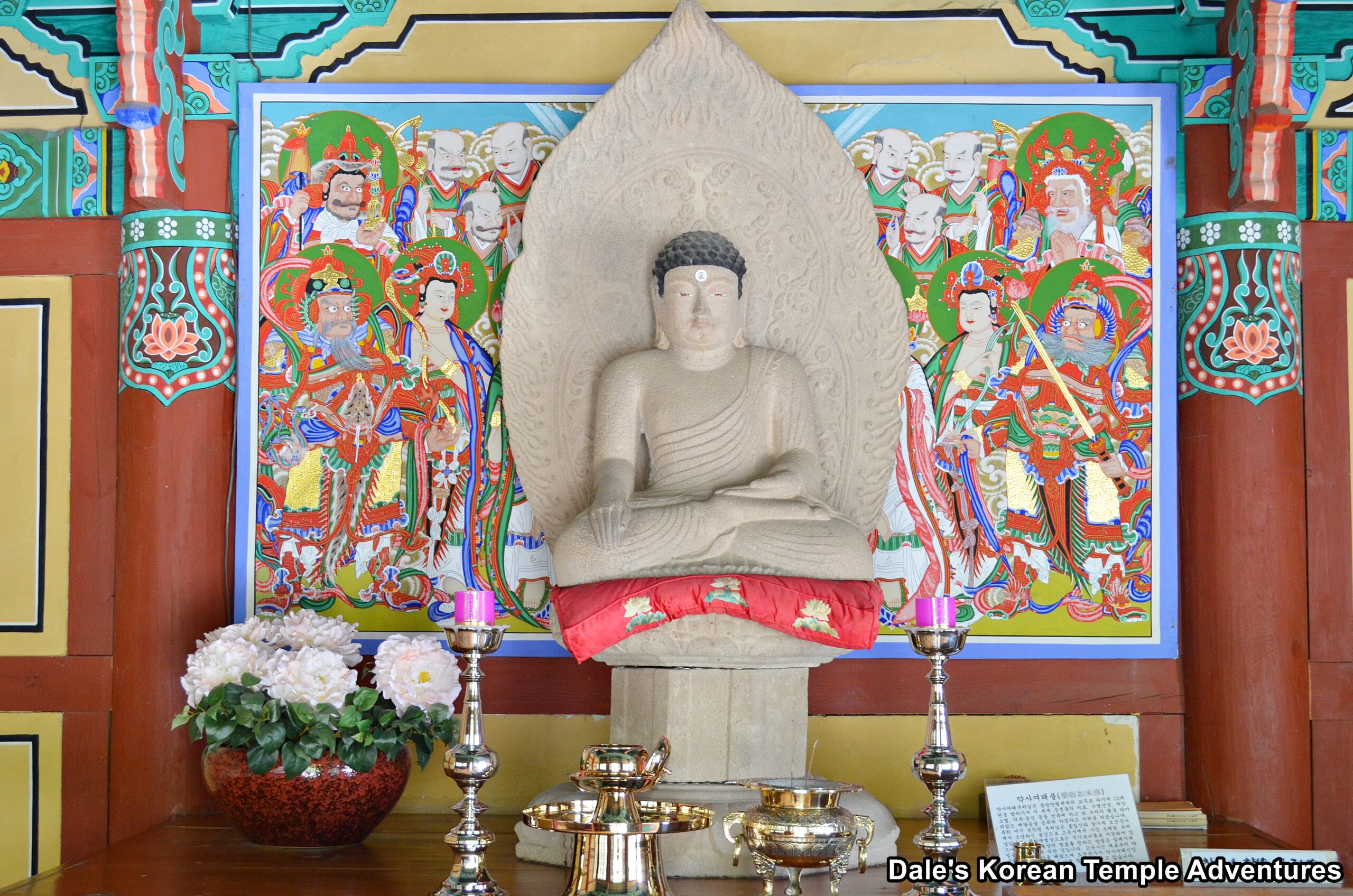Gounsa Temple – 고운사 (Uiseong, Gyeongsangbuk-do)
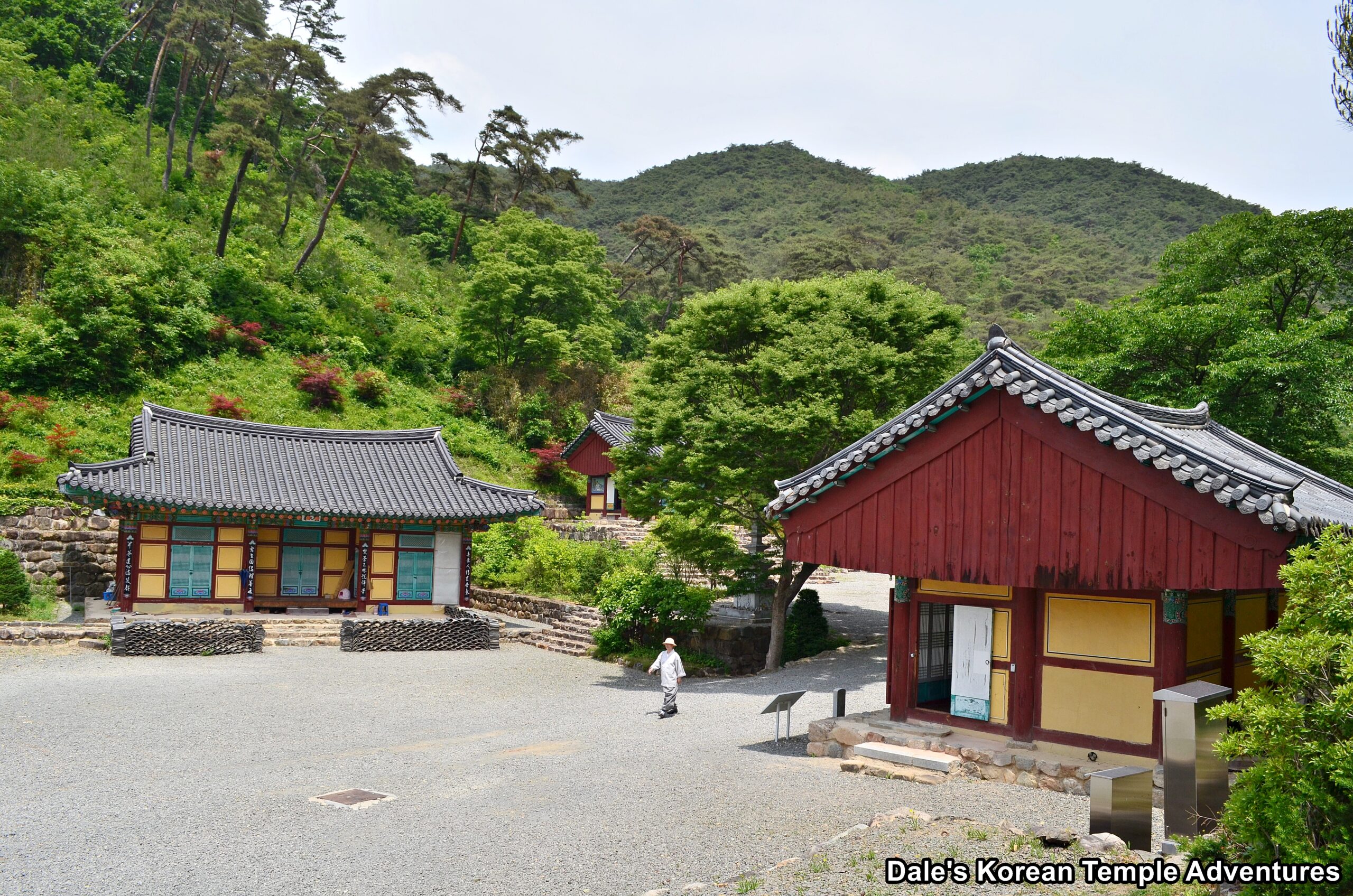
Temple History
Gounsa Temple, which means “Solitary Cloud Temple” in English, is located in Uiseong, Gyeongsangbuk-do. The temple is located to the west of Mt. Deungunsan, which means “Riding on the Clouds” in English. The temple was first established by the famed monk Uisang-daesa (625-702 A.D.) in 681 A.D. While the name of the temple originally meant “High Cloud Temple” in English, the meaning of Gounsa Temple changed to “Solitary Cloud Temple.” So while the temple has always been named Gounsa Temple and had the same pronunciation, the meaning of the temple’s name changed after it was visited by the great Confucian and Taoist scholar Choi Chiwon (857-? A.D.), whose pen-name was Goun, or “Solitary Cloud” in English. During Goun’s prolonged stay to help renovate the temple, he designed two unique pavilions at the temple: Gaun-ru Pavilion and Uhwa-ru Pavilion. For this reason, the meaning of the temple changed to its current meaning.
Throughout the years, Gounsa Temple has undergone numerous repairs and rebuilds like in 948 A.D., when it was rebuilt by the monk Unju-jotong. Then in 1018 A.D., it was renovated by the monk Cheonu. It also served as a base for the Righteous Army, led by the warrior monk Samyeong-daesa (1544-1610), during the Imjin War (1592-1598). Surprisingly, and unlike so many other major temples on the Korean peninsula, Gounsa Temple avoided being destroyed by the invading Japanese at this time. After the Imjin War, Gounsa Temple underwent a large-scale reconstruction project that started in 1695.
During the 19th century, Gounsa Temple suffered serious damage during two fires: one in April, 1803 and the other in February, 1835. The temple was rebuilt after these destructive fires. Another destructive fire took place, destroying a few shrine halls at Gounsa Temple, in 1975. More recently, and in 1980, the temple grounds were completely renovated. And in 2010, a new main hall was built at Gounsa Temple. Several famous contemporary monks have called Gounsa Temple home like Goam (1899-1988) and Jeongang (1898-1975)
Gounsa Temple is home to one Korean Treasure, and it also participates in the popular Temple Stay program. Gounsa Temple is also the Headquarters Temple of the 16th District of the Jogye-jong Order (the largest Buddhist Order in Korea). Gounsa Temple oversees sixty branch temples in Andong, Uiseong, Yeongju, Bonghwa, and Cheongsong.
Some of this great information can be found at David Mason’s wonderful website. Please check it out here!
Temple Layout
Gounsa Temple is located up a rather remote valley. In fact, the road that leads up to the temple grounds is eight kilometres long. When you finally do arrive at Gounsa Temple, you’ll be greeted by the beautiful bowed pillars of the distinctly designed Iljumun Gate. Beyond this gate lies the Cheonwangmun Gate, which is home to four fierce-looking statues of the Four Heavenly Kings.
Before you enter the rest of the temple grounds, you’ll first be greeted by the oldest building at the temple: the Gobul-jeon Hall. Inside this compact temple shrine hall sits a ancient faceless statue of Yaksayeorae-bul (The Medicine Buddha, and the Buddha of the Eastern Paradise). However, watch your head when you enter this temple shrine hall because the ceiling is rather low.
Beyond the Gobul-jeon Hall, and to the left, rests the most unique building at Gounsa Temple. The Gaun-ru Pavilion, which means “Floating Over the Clouds Pavilion” in English, was one of two pavilions designed by Goun (Choi Chiwon). This beautifully designed little hall, which is supported by wooden columns and foundation stones, is and was used for holding classes and studying. A tranquil stream flows past the long wooden support columns underneath the uniquely designed Gaun-ru Pavilion. The Gaun-ru Pavilion was rebuilt in 1835 after the previously mentioned devastating temple fire. And to the left of the Gaun-ru Pavilion, which was also designed by Goun, is the plain Unwa-ru Pavilion.
Backing these two pavilions, and before spanning a bridge to gain entry to the main temple courtyard, you’ll notice the Jong-ru (Bell Pavilion). To the left of the collection of entry pavilions at Gounsa Temple is a pathway that leads you to the left of the monks living quarters. To the right of these living quarters is an older temple courtyard. Housed inside this area is the Geukrak-jeon Hall. Adorning the exterior walls to this temple shrine hall are a set of bluish Palsang-do (The Eight Scenes from the Buddha’s Life Murals). As for the interior, and resting on the main altar, are a triad of ornate statues centred by Amita-bul (The Buddha of the Western Paradise). This statue is joined on either side by Gwanseeum-bosal (The Bodhisattva of Compassion) and Daesaeji-bosal (The Bodhisattva of Wisdom and Power for Amita-bul).
Past the visitors centre, you’ll come out on the other side of the Geukrak-jeon Hall courtyard next to the temple’s Jong-ru (Bell Pavilion). The Jong-ru Pavilion is home to a beautiful fish and cloud gong. To the left of the Jong-ru Pavilion is the Yeonsu-jeon Hall. Uniquely, this hall enshrines the family records of the royal family. It was first built in 1774, and it looks Confucian in style.
To the far right, and still in the same temple courtyard, you’ll see the brand new Daeung-jeon Hall that was completed in 2010. The Daeung-jeon Hall is surrounded on all sides by Shimu-do (Ox-Herding Murals). As for the interior, and sitting in the centre of a triad of statues, is a statue of Seokgamoni-bul (The Historical Buddha). This statue is joined on either side by a statue of Munsu-bosal (The Bodhisattva of Wisdom) and Bohyeon-bosal (The Bodhisattva of Power). On the far right wall is a Shinjung Taenghwa (Guardian Mural). And the entire interior of the Daeung-jeon Hall is adorned with beautiful Palsang-do (The Eight Scenes from the Buddha’s Life Murals).
Up an embankment are a collection of temple shrine halls housed in the upper courtyard. To the far left, you’ll see a collection of three shrine halls. The first of these three is a smaller structure that houses the Stone Seated Buddha of Gounsa Temple. The statue, which is in relatively good condition, was made in the 9th century, and it’s Korean Treasure #246.
The other two shrine halls in this area are the Samseong-gak Hall and the Myeongbu-jeon Hall. The paintings housed inside the Samseong-gak shaman shrine hall are of Sanshin (The Mountain Spirit), Chilseong (The Seven Stars) and Dokseong (The Lonely Saint) are rather plain in composition, while the statues inside the Myeongbu-jeon Hall of the Siwang (The Ten Kings of the Underworld) and the black haired statue of Jijang-bosal (The Bodhisattva of the Afterlife) on the main altar are rather scary.
How To Get There
From the Andong Intercity Bus Terminal, you can catch a local bus to Gounsa Temple. These buses leave at 9:10 a.m., 10:40 a.m., 1:15 p.m., and 4:40 p.m. The bus ride takes about forty minutes to get to Gounsa Temple.
Overall Rating: 8/10
The remote Gounsa Temple is beautifully situated among mountains and stunning foliage. And because of its rather remote location, it’s perfect for a tranquil visit. Adding to its location are the beautiful temple shrine halls like the Gaun-ru Pavilion and the newly built Daeung-jeon Hall. Also of interest is the 9th century statue of the Buddha and the numerous murals spread throughout the temple grounds both inside and out shrine halls.
